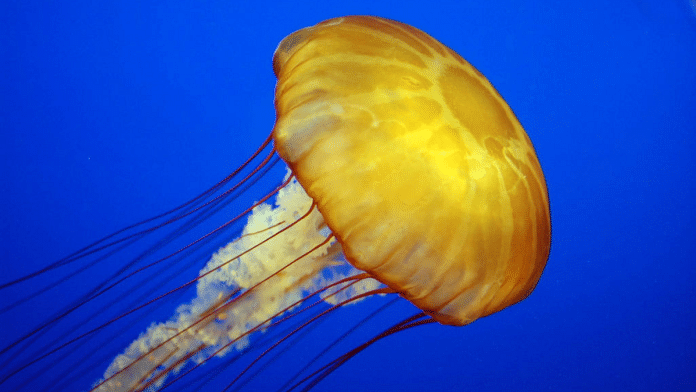New Delhi: Researchers from the University of Tokyo appear to have finally figured out how jellyfish can regrow their tentacles within three days.
The jellyfish’s regenerative qualities have long fascinated biologists. According to a study published in the PLOS Biology journal on 21 December, it’s a certain group of cells known as proliferative cells — that help this process.
According to the study, the stem-like, rapidly-growing group of cells appear in a clump whenever a jellyfish is injured. These cells are different from the regular stem cells in the jellyfish’s body as they’re specific to repair functions.
The origins of these repair-specific cells remain unclear, but this research marks a beginning and sheds light on evolutionary mechanisms in regenerative animals like jellyfish. Read more here.
Also Read: Our organs age at different rates, faster ageing means 20-50% higher mortality risk, shows study
Could less CO2 in planet’s atmosphere indicate water presence?
What does the absence of carbon dioxide in a planet indicate? Signs of water, a new paper by researchers from the Massachusetts Institute of Technology and the University of Birmingham, among others, suggests.
The paper, published in Nature Astronomy journal on 28 December, proposes that a low carbon dioxide, or CO2, content in the atmosphere of temperate rocky planet, as compared to other planets of the same system, could be indicative of the presence of liquid water and thus the possibility of a habitable planet.
The research indicates that within the solar system, the three planets with similarities such as rocky surfaces and temperate climates are Venus, Earth, and Mars. Earth, the only planet with liquid water currently, also has much less carbon dioxide in its atmosphere since a lot of it is stored in its oceans.
The paper also notes that a similar low content of carbon dioxide in any far-off planet’s atmosphere, as compared to that of its neighbours, could be a sign of the presence of water on it. Read more here .
Gut microbes may play a role in social anxiety
Gut microbes could play a part in Social Anxiety Disorder (SAD), shows a new study, opening the doors for a new line of treatment.
Research into the role of gut bacteria has revealed their significant impact on various health conditions, including mental health disorders. Understanding how these microbes function can lead to innovative treatments for conditions like SAD.
SAD, marked by overwhelming fear in social situations, lacks clear biological understanding and therefore, effective treatments. However, an increased focus on gut microbiota — microbes, bacteria, and archaea that live in our gut and are important for brain activity and cognitive functions — led to an investigation into its role in SAD.
A study published in the journal Proceedings of the National Academy of Sciences on 26 December, presented how DNA analyses of gut microbes in healthy people and people with SAD showed considerable differences. As part of the study, researchers transplanted this microbiota suspected to be responsible for SAD into some mice, leading to heightened social fear in the mice.
According to the study, the behaviours of the mice remained unchanged in depression and general anxiety tests, differing only in the area of social fear.
This connection opens up the way of targeting the microbiome to treat SAD. Read more here.
‘eSoil’ for better crop growth
Cultivating veggies, fruits, and food grains without soil. That’s what a team of researchers from Sweden’s Linköping University are working on.
According to a study published in Proceedings of the National Academy of Sciences journal on 25 December, these scientists have invented ‘eSoil’ — a bioelectronic soil that helps in the hydroponic growth of crops, i.e. cultivation of crops without soil, using only water, nutrients, and a substrate.
Esoil, according to the study, enhances the growth of barley seedlings by 50 percent, consumes less power, and is made up of cellulose — an abundantly available polymer. Hydroponic cultivation also requires little water since it is a closed system of growth that allows water circulation and gives each seed the exact amount of nutrients needed.
The study could be a step towards understanding plant responses to an electric field and developing higher crop yields using sustainable processes and come at a time when climate change and resulting weather vagaries are increasingly becoming among the world’s most pressing challenges. Read more here.
(Edited by Uttara Ramswamy)
Also Read: Aditya L1 unveils full-disk images of Sun, telescope aboard used 11 filters to show new details






